Plant breeding programs in Serbia
Serbia is at the crossroads between Central-Southern and eastern Europe, between the Balkan peninsula and the Pannonian Plain. The break-up of the former Yugoslavia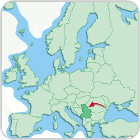 negatively impacted Serbian agriculture in the early 1990s and continued to have adverse effects throughout the decade (1990-2000). Serbia therefore has an economy based mostly on various services, which account for about 63% of the GDP, while the agricultural sector accounts only for 12.3%. The most widely grown field crop in Serbia is maize, followed by wheat, sunflower, soybean, sugar beet, and vegetable and forage crops.
negatively impacted Serbian agriculture in the early 1990s and continued to have adverse effects throughout the decade (1990-2000). Serbia therefore has an economy based mostly on various services, which account for about 63% of the GDP, while the agricultural sector accounts only for 12.3%. The most widely grown field crop in Serbia is maize, followed by wheat, sunflower, soybean, sugar beet, and vegetable and forage crops.
Plant breeding started in Serbia over 70 years ago when the first state-owned institutes and faculties were founded. The long tradition of this activity in the country is evidenced by the large number of plant varieties and hybrids that have been developed and released. Plant breeding in Serbia is today carried out mostly by stand-alone, government-owned institutes and by institutes that are part (subdivisions) of the various faculties of agriculture and universities in the country.
Wheat, maize and soybean are the main crops covered by Serbian plant breeding activities. Their breeding programs are well-designed and mostly geared towards increased plant productivity, quality, adaptability, resistance to biotic and abiotic factors, and (in the case of maize and sunflower) resistance to certain specific herbicide groups. An important part of these programs is the development of plant varieties and hybrids for special purposes.
The number of researchers involved in Serbian plant breeding programs seems to be adequate and sufficient to meet agricultural needs and requirements at the national level. However, this is not the case for the financial status. The funds provided to the institutes by the government are not sufficient to support intensive, top quality plant breeding programs. Because of this, the institutes have been forced to supplement their budgets by selling their proprietary seeds and services.
Research and education institutes with activities in plant breeding
Public Institutes
 |
Institute of Field and Vegetable Crops of Novi Sad (IFVC)
Website available in English, Serbian or RussianIFVC in Novi Sad is the largest plant breeding organization not only in Serbia but in the entire Balkan region as well. The IFVC was founded in 1938 by the then Yugoslav government. Today, the majority owner of the IFVC is the Serbian government, specifically the Ministry of Science and Technological Development, although more than 95% of the Institute’s annual income comes not from government funding but from actual earnings on the market (seed sales, etc.). The most IFVC resources, both human and financial, are devoted to maize, sunflower, wheat, soybean, and sugar beet. Resources for the other crop species are more modest. Biotechnology activities are carried out for some species. |
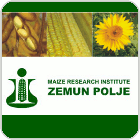 |
Maize Research Institute (MRI)
|
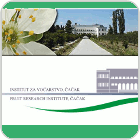 |
Fruit Research Institute
|
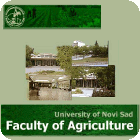 |
Institute for Fruit and Vine Growing (IFVG) of the Faculty of Agriculture (University of Novi Sad)
|
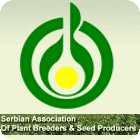 |
Serbian Association of Plant Breeders & Seed Producers
|
 |
Small Grains Center (SGC)
|
_______________________________________
Information by Dr Borislav Kobiljski and Dragan Škorić (2008). - Information based on the Serbia's full report from the PBBC survey. Last revised 17-06-2010, GIPB.
